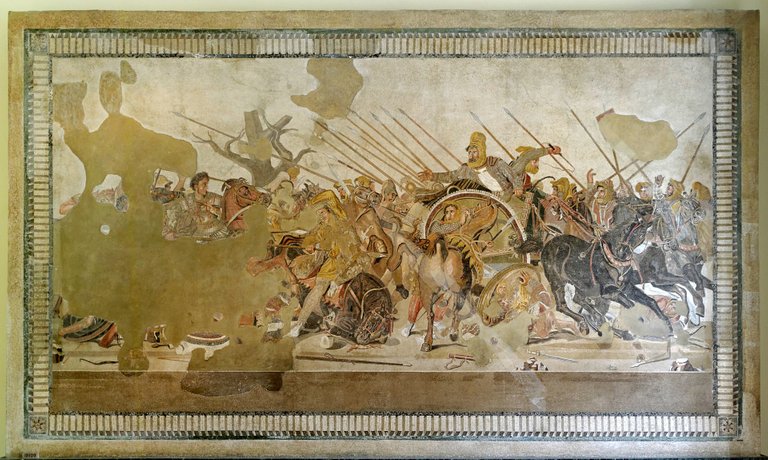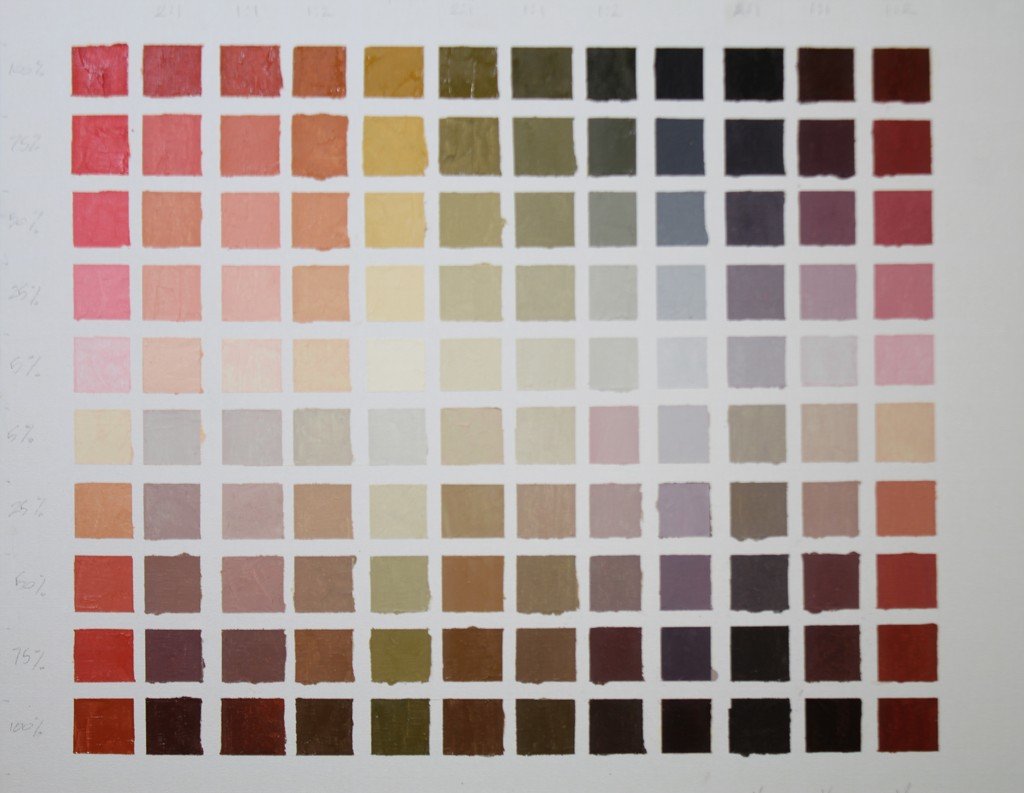Apelles Palette - the Ancient Influence Upon Figurative Painting

For over 2000 years Apelles of Kos (c.370-c. 320 BCE) was known as the greatest of painters. His works were praised for their grace and sensuality. He was not only Alexander the Great’s exclusive portrait painter, but was the single greatest influence on the Renaissance, Baroque and ultimately European painting.
Apelles advocated the use of the ancient tetrachrome palette from which a wide range of colours, including all flesh-tints (pale to swarthy), could be mixed. Pliny wrote of Apelles applying varnish to his paintings that ‘caused a radiance in the brightness of all the colours and protected the painting from dust and dirt’.
The Alexander Mosaic at Pompeii (above image) is thought to have been copied from a painting by Apelles. Other notable artists of this time were Aëtion, Melanthius and Nikomachus. Of these artists, Pliny remarked, in Book 37.12 of his Natural History: Quattuor coloribus solis immortalia illa opera fecere (‘Four colours alone make their work immortal’).
Albrecht Durer was known as the “German Apelles”. Botticelli bragged he was Apelles reincarnated and repeated his compositions. Rembrandt, late in life, adopted the four colour “Apelles palette” striving for his graceful harmony.
The basic four-colour palette was therefore Red Ochre, Yellow Ochre, Chalk White (Gypsum White) and Vine Black (Blue Black). A notable feature of the palette was the absence not only of blue but also of green and purple, and all the brighter pigments. As a classical root of Western painting, this four-colour selection has been much more enduring than has generally been acknowledged.
The upshot of using a palette of earth colours is, it is very well suited to skin tones. It's an interesting thought when one considers that there a number of creation myths where people were made from earth.
What is referred to as the Zorn Palette, is a modification on this ancient palette, replacing the red ochre with Cadmium Red and Vine Black with Lamp Black. Modern variations can draw upon super saturated colours such as Cadmium Red thanks to industrial processes, where as in ancient times they used the natural earth pigments that were readily at hand.

Nevertheless, Apelles has an enduring influence upon figurative painting to this day.
Leave a comment below, upvote and share if you like it.
More of my artwork can be found on my website. LeoPlaw.com
Wanting to have an original artwork, take a look at this list.
And if it takes your fancy, subscribe to my newsletter.
I'm available for lessons and mentoring.
